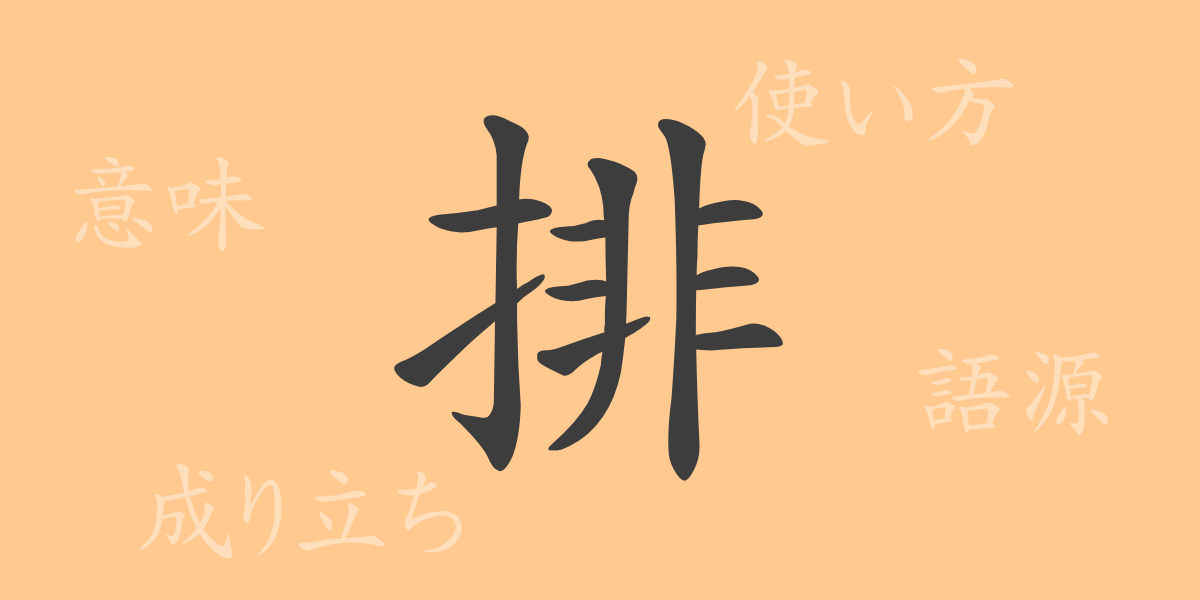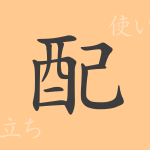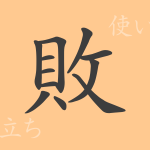The meaning of each kanji character is deeply rooted in its form and history. The common Japanese kanji ‘排’ (はい/hai) is no exception. This article delves into the origins and contemporary usage of ‘排’, unraveling its diverse allure. By exploring the background and applications of ‘排’, we aim to provide readers with new insights into this character they frequently encounter in daily life.
The Origins of 排 (はい)
The kanji ‘排’ evolved from ancient pictographs that depicted the act of pushing something away with the hands. This action came to be associated with meanings such as ‘to eliminate’ or ‘to reject’, solidifying the fundamental significance of ‘排’. Over time, its form has evolved, reflecting changes in people’s lives and thoughts alongside the evolution of language.
The Meaning and Usage of 排 (はい)
The primary meanings of ‘排’ include ‘to push aside’ and ‘to expel’, and it is used to denote the exclusion of something. For instance, it appears in terms such as ‘排除’ (exclusion) and ‘排気’ (exhaust), ranging from physical removal actions to abstract concepts like ‘排斥’ (ostracism) in social contexts.
Reading, Stroke Count, and Radical of 排 (はい)
The kanji ‘排’ reflects the richness of its form and meaning through its structure.
- Reading: The onyomi (Sino-Japanese reading) is ‘ハイ’ (Hai), and there is no specific kunyomi (native Japanese reading).
- Stroke Count: The total is 11 strokes.
- Radical: The radical is ‘はねぼう’ (hand radical).
Phrases and Proverbs Including 排 (はい)
There are numerous idioms and phrases that include ‘排’, each with its unique meaning. For example, ‘排他的’ (exclusive) describes a state of not accepting others, and ‘排気ガス’ (exhaust gas) refers to gases emitted from engines. These expressions derive from ‘排’s fundamental meaning of ‘to remove’.
Conclusion on 排 (はい)
The kanji ‘排’ symbolizes actions of ‘pushing aside’ or ‘removing’, as its form suggests. Commonly used in everyday life, this character enables richer expressions through various idioms and phrases. This exploration has deepened our understanding of the extensive history and versatile usage of ‘排’.

























